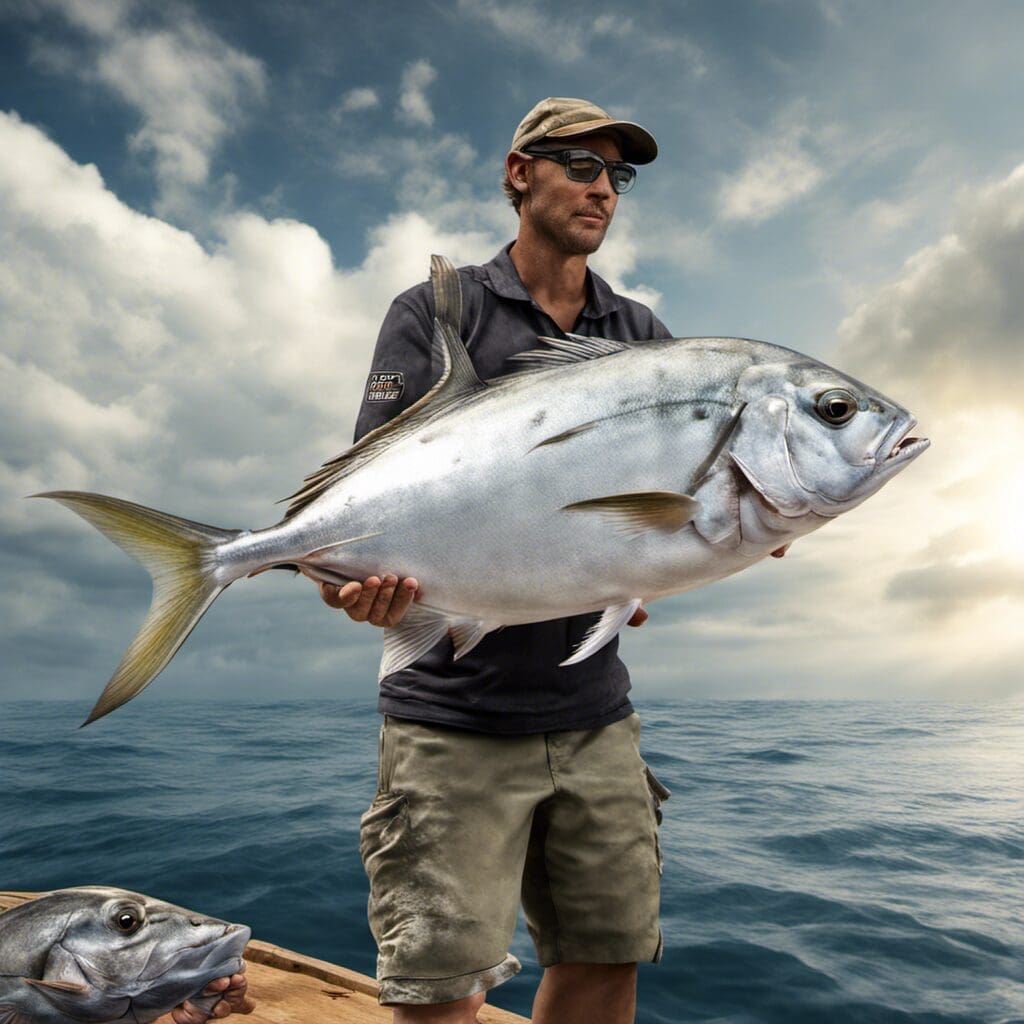Introduction
The Giant Trevally, also known scientifically as Caranx ignobilis, belongs to the Carangidae family. This species of fish has been famously nicknamed the “Gangsters of the Flats” due to their aggressive disposition.
Conservation Status
Despite being a popular sport and food fish, the Giant Trevally is currently listed as least concern by the IUCN Red List. Conservation efforts primarily consist of regulations surrounding fishing practices, including size and catch limits, licensing requirements, and seasonal restrictions.
Statistics
| Statistical Category | Average | Range |
|---|---|---|
| Length | 0.5-1.7m | 0.5-1.7m |
| Weight | 15-40kg | 1-80kg |
| Average Lifespan | 20 years | N/A |
| Other stats | Speed: Up to 58 km/h | N/A |
Distribution
The Giant Trevally primarily lives in the waters of the Indo-Pacific region, which includes parts of Australia, Eastern Africa, Hawaii, Japan, and other areas. These fish have also been known to migrate across oceanic waters, mainly for feeding and breeding.
Habitats
Giant Trevallies are demersal, prefering to dwell mostly in seawater over sandy or muddy bottoms. They typically inhabit depths of 10-60 meters. The ideal water temperature for the species ranges from 24 to 28 degrees Celsius.
When and Where to See
Spawning season often occurs in the summer months, particularly between October and January. They are also known to predominantly feed during the day.
Best Fishing Locations
- Cairns, Australia
- Komodo National Park, Indonesia
- Hawaii, USA
- Andaman Islands, India
- Okavango Delta, Botswana
- Maldives
- Seychelles
- New South Wales, Australia
- Agatti Island, India
- Ascension Island, Atlantic Ocean
Fishing Tips
Catch the Giant Trevally by using fish or squid as bait. Methods such as trolling, surfcasting, and popping are frequently used to catch this species.
Identification Guide
Giant Trevallies can be easily identified by their silver-grey to black body and a steeply sloped profile. Their distinct dorsal fin with a deep dip in the middle is another key feature.
Culinary
Giant Trevally is known for its firm, white meat, which is often grilled or used in fish stews. These fish are commonly included in traditional Hawaiian poke bowl recipes.
Additional Information
Giant Trevallies are carnivorous and often hunt in packs. They mainly feed on a diet of smaller fish and crustaceans. Human-induced threats come from industrial fishing, habitat destruction, and pollution.
References and Further Reading
For extensive information about the Giant Trevally, consider reading publications from the Department of Agriculture, Water and the Environment, Australia. Find complete guides about fishing this species from sites like FishingBooker. Articles about their behaviour and habits can be found in science journals such as Marine Biology. Please note this information provides an overview and often updated research could present subtle changes in information about this species

